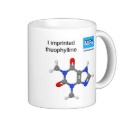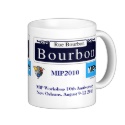|
|
Reference type: Journal
Authors: Yoshimi Y, Arai R, Nakayama S
Article Title: Influence of the solvent on nature of gate effect in molecularly imprinted membrane.
Publication date: 2010
Journal: Analytica Chimica Acta
Volume: 682
Issue: (1-2)
Page numbers: 110-116.
DOI: 10.1016/j.aca.2010.09.050
Alternative URL: http://www.sciencedirect.com/science/article/B6TF4-5161PDN-5/2/6ae13e07ee11fb87373422f98b77180f
Abstract: The solute diffusive permeability in a thin layer of a molecularly imprinted polymer (MIP) is affected by specific binding of the MIP with a template. This phenomenon, termed the "gate effect," would be widely applicable for the development of novel biomimetic sensors. However, the mechanism underlying the gate effect is not totally understood. We present here investigation of the role of specific adsorption of a template and solution content in MIPs on the gate effect. A molecularly imprinted self-supporting membrane was formed by copolymerization of methacrylic acid, 2-vinylpyridine, and triethyleneglycol dimethacrylate in the presence of l- (or d-) phenylalanine as a template. The template adsorbed by membrane with degree of enantio-selectivity in a mixed solvent of methanol and water. The amount of adsorption and binding selectivity showed little sensitivity to the solvent composition. The solution content in the membrane increased with increasing the methanol concentration of the solvent following a sigmoid curve with an inflection point at methanol concentration of 20 wt.%. The content increased in the presence of the template at methanol concentrations higher than the inflection point, and decreased at lower methanol concentrations. The creatinine permeability across the membrane estimated by batchwise dialysis increased in the presence of the template at 50 wt.% methanol in the solvent, and did not change at 20 wt.%. There was no permeability for creatinine in the pure water solvent. Both the solution content and the permeability were not affected by the presence of the enantiomer of the template. The results show that the choice of solvent controls more strongly the nature of the gate effect than the specific binding of the template
Template and target information: l-phenylalanine, d-phenylalanine, phenylalanine
Author keywords: molecularly imprinted polymer, gate effect, chirality, Solution content, adsorption, Permeability
|


 Element 73 tie - Tantalum tie say Ta with a tie
Element 73 tie - Tantalum tie say Ta with a tie







 theophylline template mug ball and stick
theophylline template mug ball and stick







 MIP2010 10th Anniversary mug
MIP2010 10th Anniversary mug






